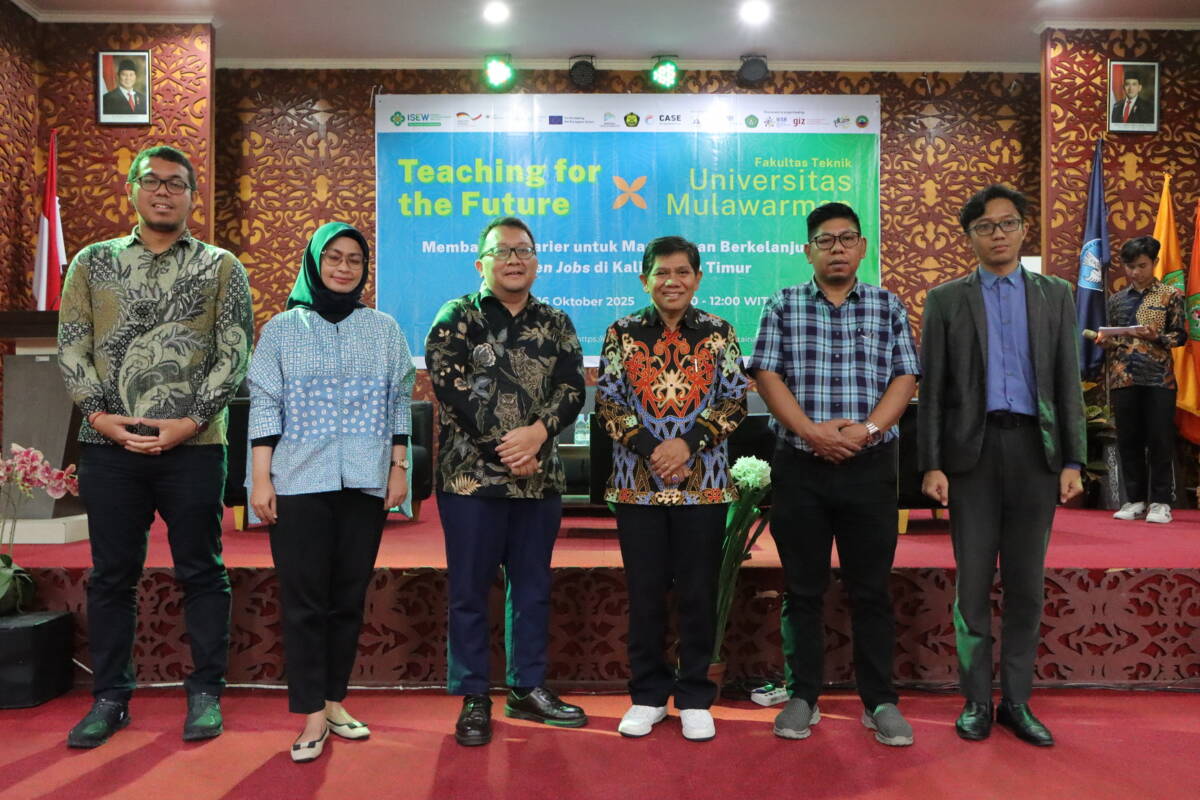Samarinda, October 17, 2025 – In several regions such as East Kalimantan, green economic development is starting to show positive impacts on regional growth. The Gross Regional Domestic Product (GRDP) has increased in line with energy transition initiatives and the involvement of the community in sustainable projects. This kind of model can serve as an example for other regions in integrating education, economy, and the environment. This was stated by Jayanti Maharani, Coordinator of Electricity, Directorate of Transmission, Electricity, Aerospace, and Outer Space, Ministry of National Development Planning/Bappenas, at the “Teaching for the Future x Faculty of Engineering Universitas Mulawarman” event. The event was organized by the Consortium for Clean, Affordable, and Secure Energy for Southeast Asia (CASE) and supported by the British Embassy Jakarta and the Institute for Essential Services Reform (IESR) through the Green Energy Transition Indonesia (GETI) project on Thursday (16/10).
“For this, the role of universities is becoming crucial in this process. Campuses are expected to be centers for the development of science and technology relevant to the needs of the green industry. Through collaboration with the government and business actors, universities can become the birthplace of innovation, research, and training oriented towards real solutions in the community. For example, local needs-based training programs can help communities develop small, environmentally friendly, and sustainable businesses,” Jayanti emphasized.
Wahyu Gatut Purboyo, Head of Economy and Natural Resources Division, East Kalimantan Provincial Development Planning Agency (Bappeda), stated that currently, about 62% of the East Kalimantan Provincial Government’s revenue still depends on the coal sector. This sector also contributes 34.2% to the Gross Regional Domestic Product (GRDP) and 9% to employment in the region. This high dependence, he said, makes East Kalimantan’s economy very vulnerable to global energy market fluctuations.
“In line with the predicted decline in global coal demand starting in 2035, the need to accelerate the development of renewable energy is becoming increasingly urgent,” he said.
He explained that one step that can be taken is utilizing ex-mining land as an area for the development of Floating Solar Power Plants or floating solar farms. This utilization not only has the potential to generate clean energy but is also capable of restoring post-mining environmental functions and opening up new job opportunities in the green sector.
On the other hand, Fahrizal Adnan, Vice Dean for Academic, Student Affairs, and Alumni, Faculty of Engineering, Universitas Mulawarman, affirmed that universities have an important role as talent incubators that prepare superior human resources (HR) to face future challenges, especially in the era of energy transition and the green economy. For instance, universities can reorient their curriculum. This means that the courses taught need to adjust to global developments, such as renewable energy, the circular economy, environmental sustainability, and energy digitalization. With this integration, students will not only understand theory but also be able to apply their knowledge in addressing energy and environmental issues.
“Universities also need to facilitate competency certification for students and educators. Certification in technical fields such as solar PV installation, energy auditing, Environmental Impact Assessment (AMDAL), or other specific areas will increase the competitiveness of graduates in an increasingly competitive job market. More than just theory, universities can make the campus a living laboratory. Through real projects such as the construction of green energy systems on campus, students can learn directly about the application of sustainable energy while contributing to emission reduction,” Adnan explained.

